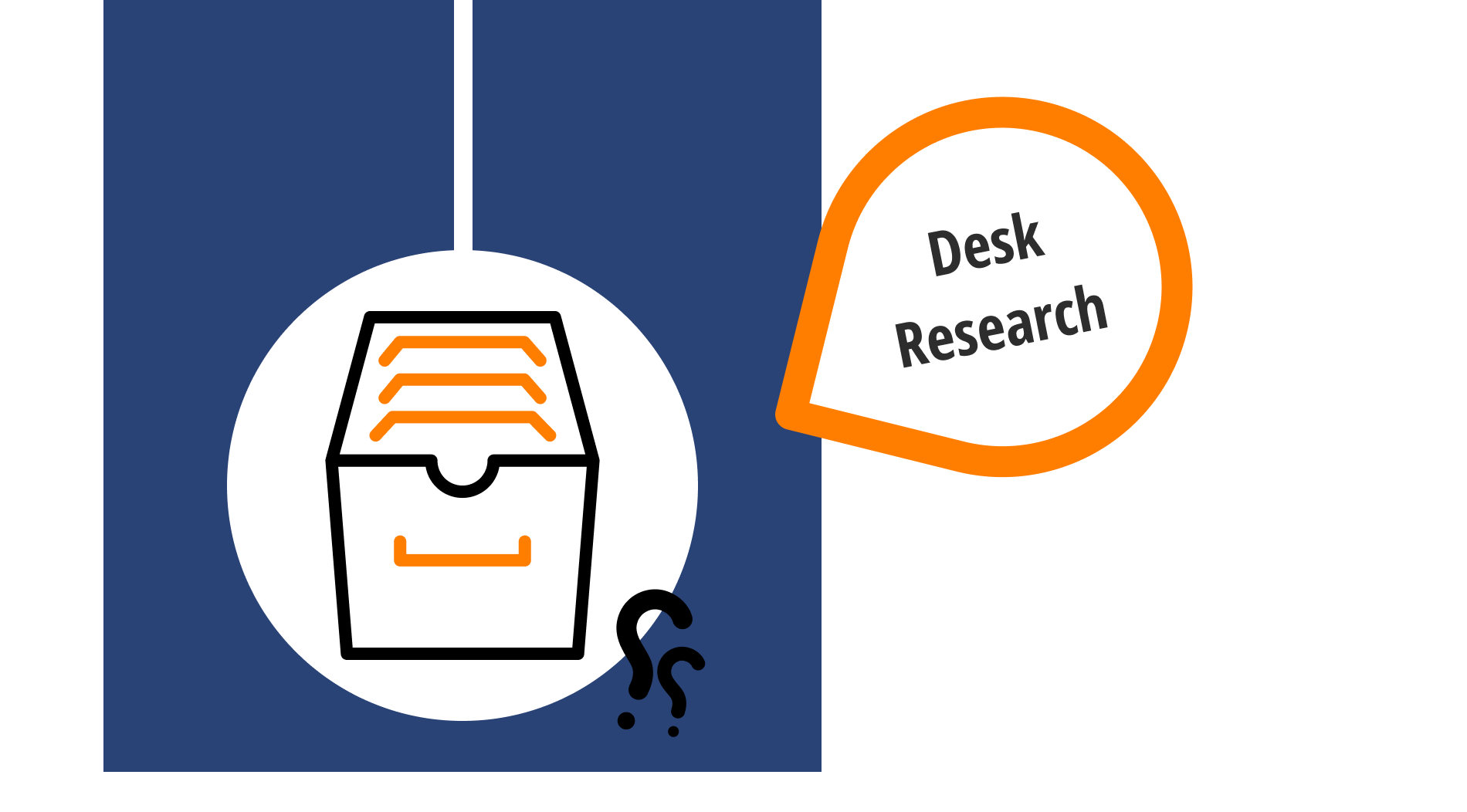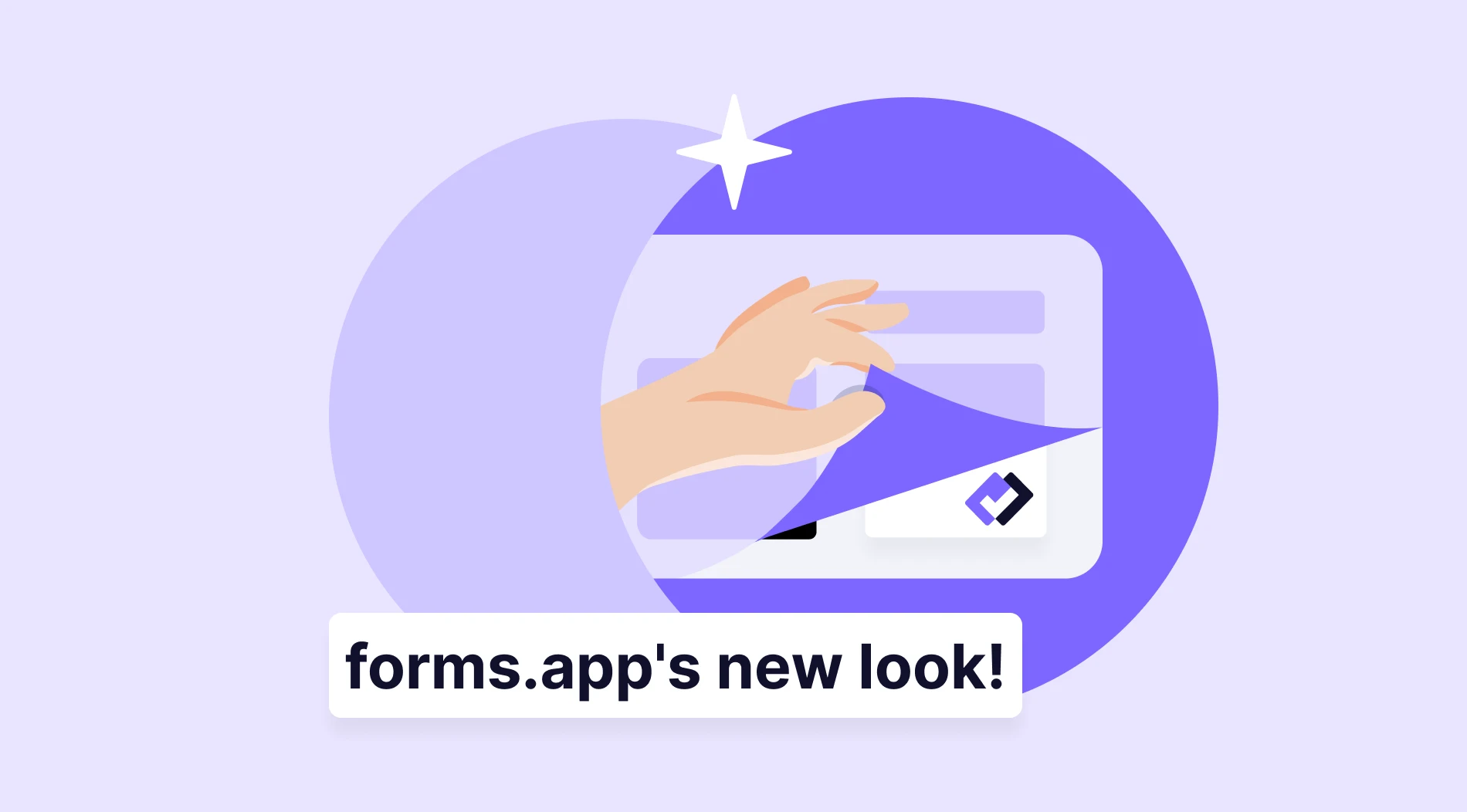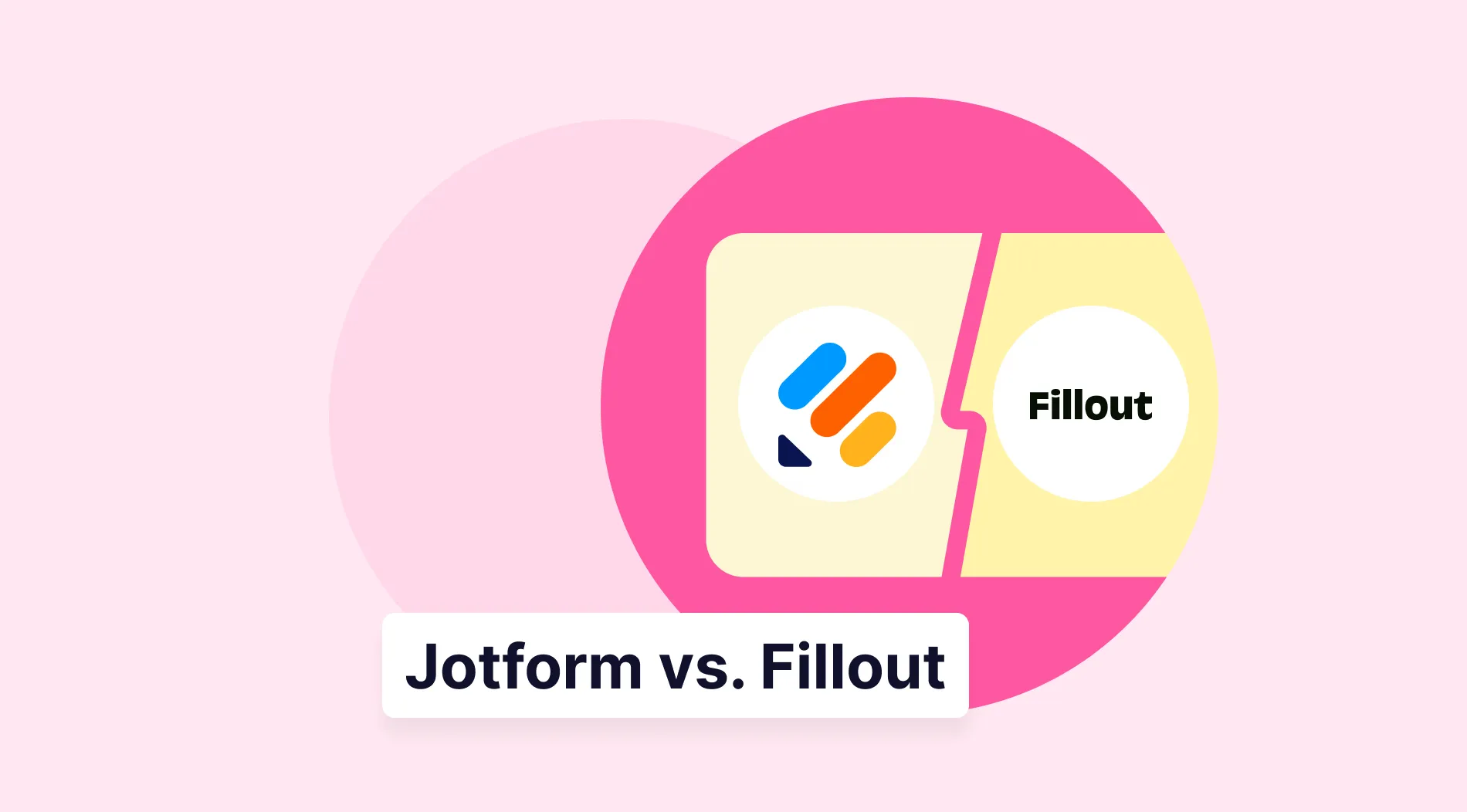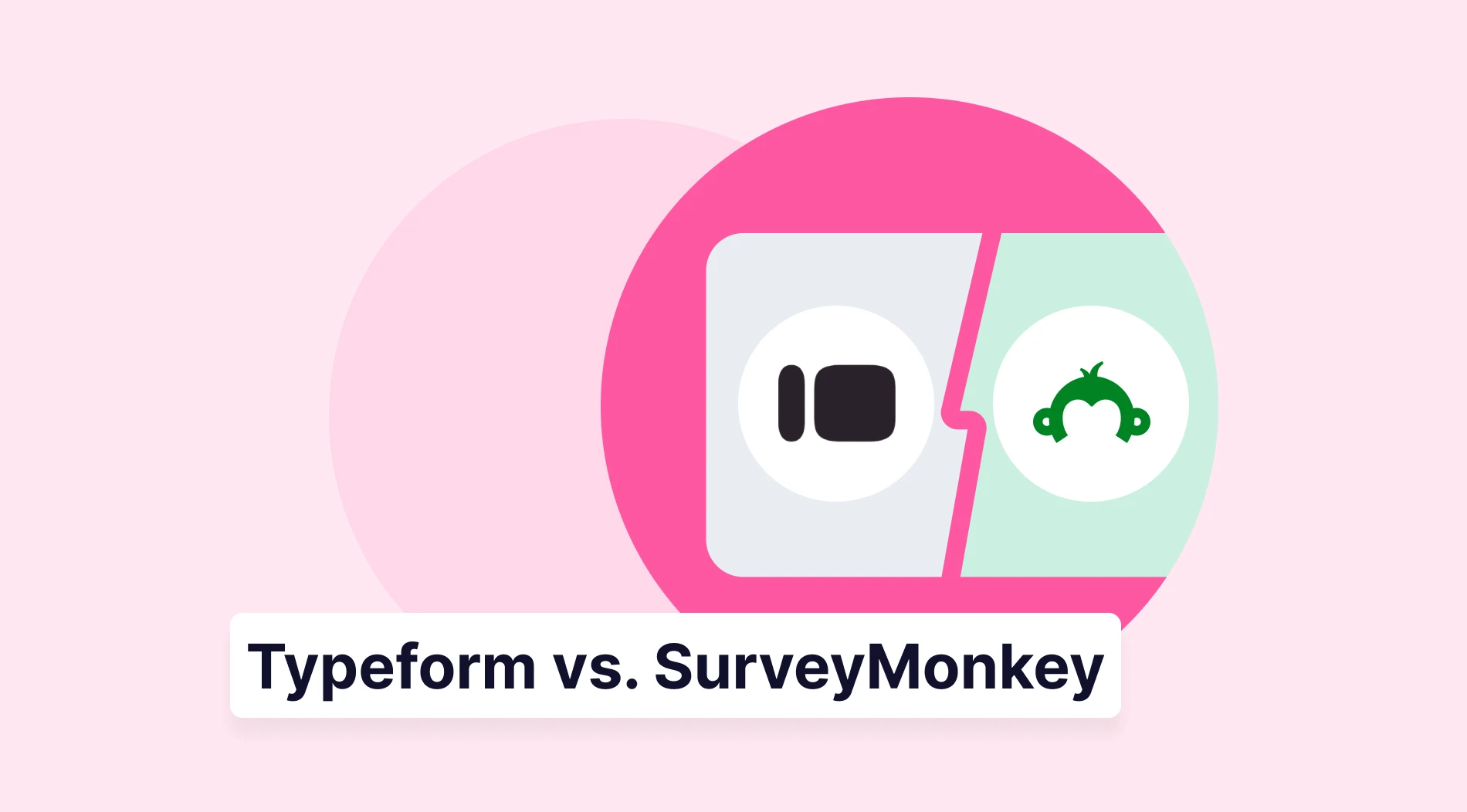Every research starts with thinking and then continues with reading. Lots of reading 🤓. It’s because you have to know what other scientists, marketers, and researchers have found on the subject so you can build on it. This is basically what desk research is.
In this article, you will learn what secondary or desk research is and how to do it with some excellent tips and examples. Let us get started with the basic definition!
What is desk research?
In layman’s terms, desk research is a type of research where you gather data while “sitting at a desk.” It is another name for secondary research where the study itself is desk-based research and not experiment-based research.
Broadly speaking, there are two types of main research types. One of them is primary research, where the researcher tries to gather data firsthand (directly from the data source). The other one is secondary research, where the researcher is going through secondary data from published books, case studies, and other quantitative research. In other words, secondary research basically equals desk research.
Why do you need desk research?
No matter the objective of the study, desk research should always be the first step. Because previously done experimental research and explanatory research give a good starting point. If you can take advantage of the existing information, it is always constructive to see what was previously said. But that is not the only reason to use this research method. So here are the advantages of desk research:
✅Insightfulness
It would be foolish of you to just jump into the middle of research without doing any research beforehand. A researcher who collects data before going along with their plan will gather substantial information and continue with their plan with this obtained insightfulness.
✅Time efficiency
Conducting a full-on study from start to finish is quite time-consuming. However, secondary data is right there waiting to be inspected. Thanks to that, the data collection is very quick.
✅Availability
As mentioned above, the secondary data collection sources are available on many platforms. They can be found in libraries, databases, online sources, booklets, and many more.
✅Cost-effectiveness
In addition to the other advantages, doing desk research is very cheap, too. So long as you can access a library or have an internet connection, you can gather the appropriate data without a cost.
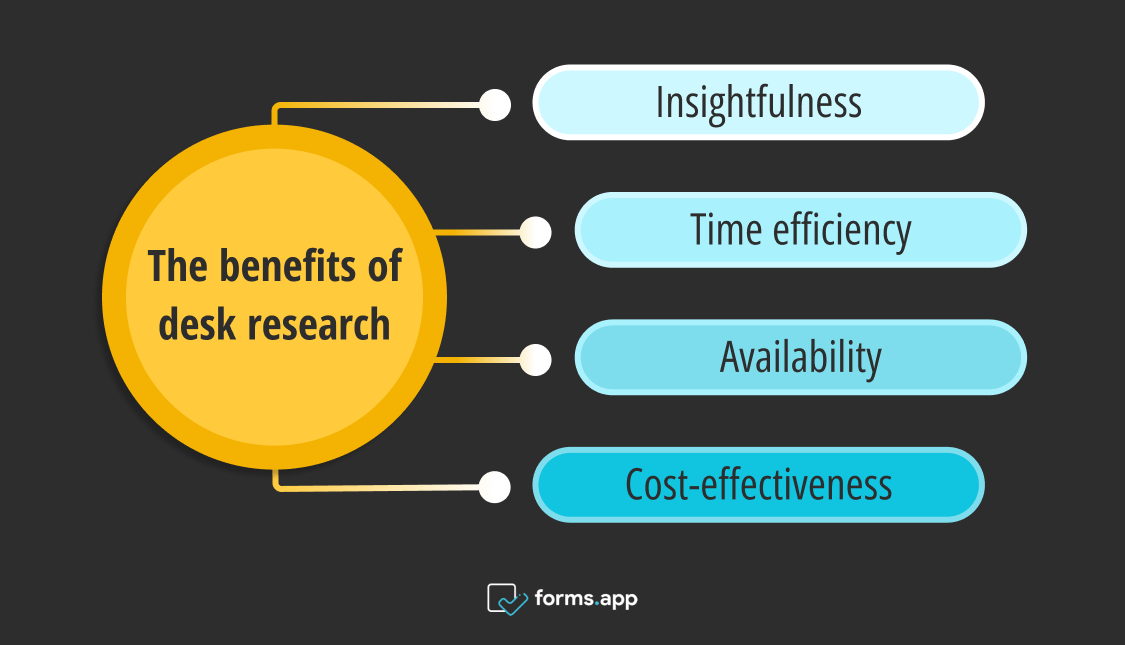
The benefits of desk research
How to do desk research
The best approach to any research is a systematic one. That is why you should always have a plan or outline you will follow during your research. And we have gathered this step-by-step plan to guide you on your desk research. You can use it as is or build on these steps.
- Identify the topic: The first thing is to identify the research topic clearly to make sure you know what you want to know.. (You can change the topic as you explore the concept further.)
- Find research sources: Secondly, go on and identify the research sources.
- Collect data: Afterward, you can start collecting data from these sources. Go through every option to gather as much information as possible.
- Combine everything: Combine all that you gathered and compare it with the other information you collected. Make sure there are no contradictions.
- Make an informed analysis: The last step is to try to see if the findings answer the research topic well enough or not. If not, you can change the question or repeat the process. If you are satisfied with the findings you can decide if you want to continue with exploratory research methods to further your findings.
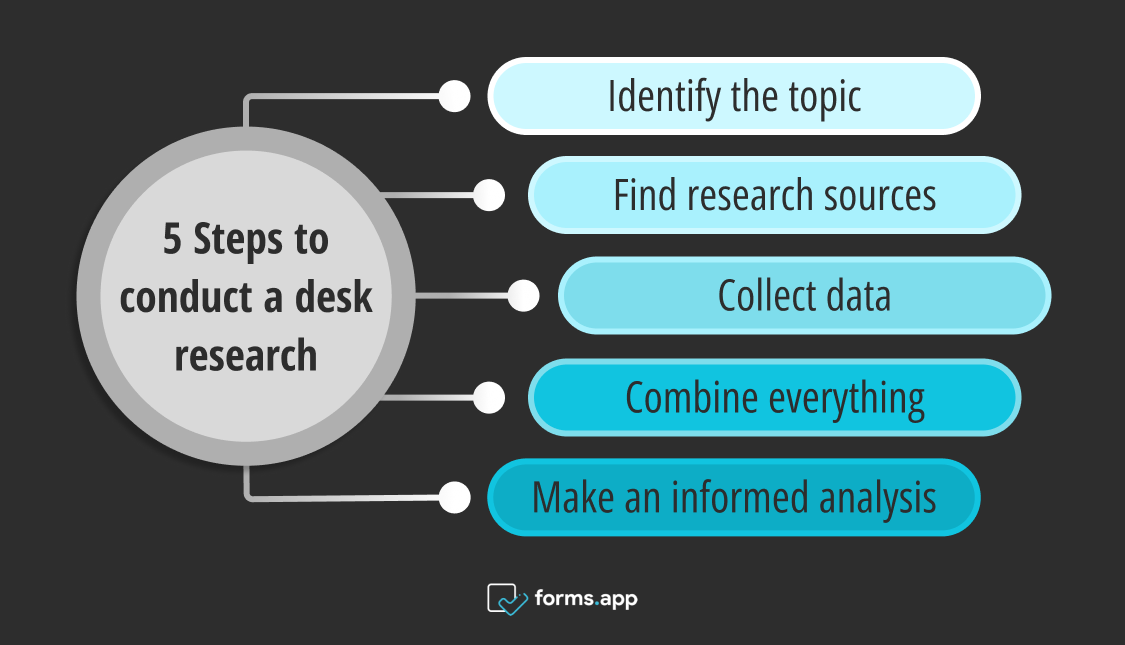
5 Steps to conduct a desk research
Expert tips for desk research
Even the simplest task is best done by following a structured plan and organization. In addition to this, if you are planning to start your desk research, you should mind these smart tips to guide you in your way:
- Make sure the data you collect is not outdated.
- Take systematic notes while going through the sources so as not to get mixed up.
- Be critical and analytical and question your findings to make sure there are no contradictions.
- Do not limit yourself to just a few sources. It is better to make use of all options.
- Do not be biased. Stay open-minded. If you limit yourself to only a number of sources, your findings will be more than likely, insufficient. You should broaden your perspective by looking into various sides and frames.
- You can change course according to your findings. Do not feel limited to a frame.
- You can combine and support your findings with some primary research techniques such as surveys, interviews, or observations.
Applications of desk research
Now, we know how to do desk research, what to have in mind, and its advantages. But on what occasions can you use this type of research? Let us see some examples of desk research.
1. Doing market research on a subject
When you want information on the latest fashion trends and clothing preferences of teenagers, it is best to consult appropriate data. You can read through magazines, fashion articles, fashion brand reports, and so on. Worth the data you obtain, you can build your fashion brand or create an eye-catching ad.
2. When you have an academic approach
Let us say you are a scholar who specializes in second language acquisition in children in a bilingual household. You can check out available online academic sources such as Google Scholar, ResearchGate, Wiley Online Library, or Library Genesis. There, you can find previously done studies, articles, and statistics.
3. Getting a general idea of a specific group of people
Let us say you will work with or around university students aged 18-28, and you want to know more about their behaviors and preferences to make informed decisions. You can use sources such as textbooks, news articles, reviews, journal entries, and previously done interviews and surveys.
Frequently asked questions about desk research
The sources for desk research are limitless. Because they are basically every study conducted on the research topic. As long as they are organized, tangible, and objective, there is no problem using them. Some appropriate resources for desk research are:
- Published books
- Case studies
- Directories
- Company financial data
- Reports
- Government statistics
- Commercial publications
- Newspapers
- Websites
- Journals
You may go through the relevant sources all you want, but if you fail to make sure the data is accurate, this can disrupt your project. There are some instances where desk research is not reliable and usable. For example, you can not use information that is outdated, biased, insufficient, irrelevant, or inaccurate.
Empirical research is based on observation as directly experienced by the researcher. And even though secondary research backs up the theory part, empirical data is a primary research method. In desk research, the researcher goes through existing sources; therefore, desk research is a secondary research method.
Desk research is also known as secondary research and it involves collecting data from secondary sources such as published documents. And, primary research involves collecting data directly from the original sources. For example, doing experiments, observations, or interviews.
Desk research, also known as secondary research, is when data collection is completed from secondary sources such as published documents or website sources. Field research, also known as primary research, is when data collection is directly from the source about a specific subject.
In desk research you collect pre-existing information while in field research you create new knowledge via exploration.
Conclusion
Desk research is an essential part of any study, no matter the concept. Thanks to desk research, the researcher collects all available data to draw their own conclusions or support their research theory.
It can be done using a number of source materials from books, reports, analyses, and entries. İt is a valuable part of the study. Desk research has its own advantages, and it can be perfected with some tips as well. What's more, you can use a smart tool such as a form and survey maker tool like forms.app to help you with all your research subjects!
forms.app, your free form builder
- Unlimited views
- Unlimited questions
- Unlimited notifications
